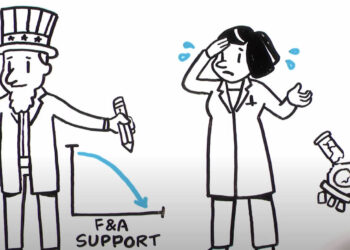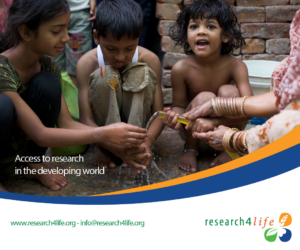
At the recent ALPSP 2016 meeting held just outside London, one session clarified and decoded for me the sources of a constant and fundamental tension, albeit it indirectly. It echoed thoughts and evidence seen before in reports from STM and elsewhere, shining a soft light on why publishers take the brunt of blame for things readers, authors, reviewers, editors, and academics don’t like, while also suggesting a solution.
The session, moderated by Isabel Thompson of Oxford University Press, featured the usual litany from speakers of “easier said than done” findings and recommendations based on small surveys, anecdotes, and speakers’ viewpoints. It was Thompson’s framing of the session that was the most useful part, as she delineated four main roles — an important word here, “role” — academics and researchers assume at different points across the various aspects of publishing. These roles are reader, author, reviewer, and editorial board member (which I’ll call “editor”).
When in each role, the same academic may recommend, demand, or expect things that they may contradict directly when in another role. For instance, an academic may, as an author, want more things to be published, as this increases their likelihood of being published. In nearly the same breath, that same academic, shifting unconsciously to the reader role, will want fewer things published so it’s not so difficult to keep up with and sort through a flood of new findings. Moreover, as a reviewer, the same person may want fewer research papers submitted to reduce the workload, while as an editorial board member, the same person may want more research papers submitted so that the journal has more to choose from and a guaranteed stream of good options.
When in the author role, academics want more published; when in the reader role, academics want to read less, and only the most relevant and highest quality materials. There is a Dr. Jekyll/Mr. Hyde flavor to these conflicting desires. Both want it done cheaply, but without anyone cutting corners.
In the middle of these and other contradictory desires sits the publisher, trying to somehow reconcile, balance, resolve, and moderate these expectations. It is clearly impossible to satisfy every constituent role and expectation — a true no-win situation.
Put another way, it’s like the old contractor maxim — I can do it cheaply, quickly, or well; you can choose which two of the three you want.
More evidence of these contradictions and compromises showed up recently on Twitter in a complaint about manuscript systems:
Publisher manuscript submission systems still pretty universally suck.#thatisall
— CⓐmeronNeylon (@CameronNeylon) September 16, 2016
Manuscript systems are complicated because they have to meet conflicting demands. They need to gather complete information for editors and reviewers, accommodate larger and larger author lists while also achieving accountability of those same authors, incorporate an increasing number of checklists and requirements from readers, funders, and academic bodies, and support workflows that allow authors to pause and return, introducing additional steps to break up the long process. Shaming them because the resulting system is complex and burdensome is like blaming a mirror when you don’t like what you see reflected back.
The main contradiction often lies between the roles of author and reader. Costs provide a good example. An academic thinking in the role of an author will likely want costs to the author (her or him) to be as close to zero as possible. The same person, as a reader, will want the costs to read articles to also be as close to zero as possible. If a publisher were to meet both expectations to the level each would deem satisfactory, the publisher would go broke. Clearly, something has to give, but no matter what does — some charges to the person when working as an author, some charges to the person when seeking to read new findings, some charges to organizations buying on their behalf — that person will be disappointed or frustrated, and it will be tempting to blame the publisher, when in fact it is costly to cater to multiple and conflicting needs.
To reiterate, there are not distinct pools of “authors” and “readers.” Rather, there are academics and researchers and practitioners and scholars, many of whom serve as both authors and readers at various times. Describing them as separate tribes is a mistake. They are often the same people assuming different roles, which makes this all the more vexing for publishers. They can’t ignore one group of people to serve another. Publishers have to serve the same people’s contradictory expectations as best they can.
Experienced editors and publishers have seen how these jumbled roles can be nearly comical in their contradictions. An academic researcher may complain about the quality of an article she’s reading over breakfast, vent about the almost prosecutorial nature of a peer review she received back at noon, boast over dinner about her vigorous and detailed peer review of a submitted manuscript, and finish the day throwing out a subscription renewal notice because she doesn’t think she should pay for online journals. The only constant in all this? How horrible publishers are.
At ALPSP, Thompson nicely noted that reading is the first and most consistent role for academics and researchers, beginning before they get into school and continuing to escalate in importance over the years. Only later do some assume the role of author (research suggests this is about 10% of scientists), and another subset may become reviewers or join editorial boards (or both), assuming yet other roles. This funnel effect gives the role of the reader a special and fundamental place in the framework. One could reasonably argue makes it the most important role to which we cater.
However, recent trends to satisfy academics when they are in the author role has added some new and contradictory needs to the mix of expectations publishers have to juggle. Funders have arrived on the coattails of authors, and are imposing some of their own expectations, as well.
Clearly, with all this complexity from the same people assuming different and shifting roles, the contractor option of “cheaply” begins to fade from contention. Yet, if there were a unifying desire, this would be it. Irony knows no bounds. People always want more for less.
Publishing platforms have been caught in this conflict of expectations, representing a proxy battle around many of these same issues. Steering a difficult path between low-cost and highly-customized while also adapting to emerging technology and media expectations, it’s clear that publishing platforms have fallen victim to this same trap of contradictions. Simply put, they can’t scale, and instead end up churning through dissatisfied publishers who push them for price concessions, greater efficiencies, and magical solutions via repeated RFP processes, which end up exhausting everyone and leading to short bursts of hope but few legitimate technology or business breakthroughs.
Manuscript systems also represent a microcosm of these same problems publishers face, as do e-commerce systems and content processing services. Today, the author role and its needs cause the strings of strategy to tremble, and the publisher’s staff responds. A week or month later, the reader role and its needs assert themselves, causing a retrenchment or change. Vendors, publishers, and the entire scholarly publishing economy is caught in a jumble of unclear demands. The end result is compromised service and no end of complaints.
Some OA publishers feel true relief at being able to eschew some of the expectations other publishers have to maintain, such as usage statistics, reader trends, and so forth. With a nearly singular focus on the author role and its needs, OA publishers who have been in the vise of conflicting demands feel the pressure lift. However, their respite may be brief. With more funding going into OA, more accountability for usage and readership also seems to be following. Also, with advertising a part of some OA business models, the focus on readers remains.
Other service industries are able to separate supply-side from demand-side more clearly than publishers can. In most other businesses, supplier roles end once a certain transaction point has been reached, when seller transactions take over. Publishers deal with a blend of supplier and seller transactions, many commingled — Is the price the publisher is proposing going to be discounted for authors? Will the author submission process work for reviewers and editors? Are readers’ needs for rapid information considered? Are the authors’ needs for multiple revision reviews taken into account? It’s a swirl of roles and demands, and the same people can find themselves on multiple sides of the same issue all at once.
How can anyone reconcile these conflicting expectations? What they have in common is service to the reader and the community of recipients of finished research reports and scholarly monographs. I personally believe that paying attention to readers is paramount, as everyone — authors, editors, and publishers — seems aligned around wanting to serve the reading role, where new knowledge is shared and learned at a community level. Yet, funding of the reading/learning/sharing function has been falling over the past few decades, with libraries receiving a shrinking share of university budgets and phenomena like Sci-Hub revealing ambivalence to disdain for paying to read. In fact, the very notion that readers pay is almost reflexively laughed out of any room, despite this model succeeding in most other areas of digital commerce — streaming video, streaming audio, and so forth.
The natural response to shifting incentives is to follow them, which means less focus on the role of “reader” for the foreseeable future. Is that really what we want?
Discussion
13 Thoughts on "Caught in the Middle — Can Publishers Resolve Contradictory Expectations?"
Just to respond to one small point:
Manuscript systems are complicated because they have to meet conflicting demands. Shaming them because the resulting system is complex and burdensome is like blaming a mirror when you don’t like what you see reflected back.
I’m not sure that’s a fair representation of what Cameron Neylon is saying when he observes that “manuscript submission systems… pretty universally suck.” There’s a difference between sucking and being complex. In my experience (and I know it’s not unique) the frequent problem with manuscript submission systems isn’t that they’re complex and therefore burdensome; it’s that they’re misleading, counterintuitive, poorly organized, and therefore dysfunctional. To put a finer point on it: there is complexity that arises necessarily from the nature of the task, and there is complexity that arises due to bad design. The former should indeed not be “shamed,” although complaining about it can be emotionally satisfying and harmless. The latter should be.
It’s unclear what Cameron is actually saying. I used it to represent a general feeling people have, and one that represents the complexity of trying to meet competing and emerging needs and expectations. No vendor or publisher has gone into building a manuscript system with the intention of “sucking” at it. And, in their early days, many systems seemed not to suck. But, then, when they gained enough clients and absorbed enough complexity from competing demands, they started to suck. Their “suckage” is, I’d assert, directly correlated with the complexity they are required to reflect, and the fact that many of the expectations are conflicting.
Try paper and post on a high-output scientific journal if you want to experience a submission process that would truly “suck”. Publishers also contend with their own workflows and systems to facilitate publications that often want or need to do things differently. The “us” and “them” narrative is often something of a misrepresentation. Any OA publisher eschewing usage statistics and reader trends is not doing their job – expect to see them on Beall’s List.
What I gain from all of this is that as publishers we have to listen. Some of the gripes will turn into improvements but most will be duly relegated to the trash can.
Given the market-oriented model that scholarly publishing has embraced, it seems rather disingenuous to blame the consumers for problems instead of the companies.
This scenario played out in full during one of my editorial board meetings last week. A few editors wanted to enforce formatting requirements, possibly even a template, for authors of new submissions. This is a common request from some editors. They are often trying to think of ways to make it easier for a reviewer to read a paper. This request flies in the face of our (ASCE’s) attempt at being author friendly. For a very long time, we have allowed authors of new submissions to provide a manuscript in pretty much any readable format. Other editors in the room agreed that we should not add extra, and mostly meaningless, hoops to the author submission process. So these are two conflicting requests– ease for authors vs ease for reviewers/editors.
One could argue that if you can, say, view images side-by-side with a paper on the publisher platform, why can’t you do that in the submission system? Easy answer: this would require processing the content submitted or requiring certain file formats–all expense laden activities that no one wants to take on when 25-75% of your content never even goes to reviewers.
There are constant trade offs. Publishers are definitely stuck trying to balance them.
This is an example of how actions at one level, from one perspective, may seem perfectly rational yet, when combined overall, result in system-level irrationality. Another example I have written about is the simultaneous sub-level actions of library acquisition staff not wanting to use precious funds on buying revised dissertations if they already subscribe to ProQuest’s dissertation database, university press editors not wanting to consider revised dissertations for publication because of lower expected sales, and P&T committee members still insisting that junior faculty need to publish first books, most of which are revised dissertations. Each attitude makes sense on its own level, but together they create an irrational result in the system overall.
“Manuscript systems are complicated because they have to meet conflicting demands. Shaming them because the resulting system is complex and burdensome is like blaming a mirror when you don’t like what you see reflected back.”
Neylon is absolutely right – these systems *suck*. And it has nothing to do with complexity. It has everything to do with a lack of investment and a UX bar that is still set very low within this industry. The online selling of complex financial products (esp. insurance) springs to mind – are these consumer facing sites ‘complex and burdensome’ because of the numerous conflicting demands of compliance and user need? The answer is a resounding no.
See Cameron Neylon’s posts on why submission systems are so difficult (and so expensive) to build and maintain:
http://cameronneylon.net/blog/polecon-of-oa-publishing-i-what-is-it-publishers-do-anyway/
http://cameronneylon.net/blog/polecon-of-oa-publishing-ii-where-are-the-choke-points-for-reforming-scholarly-publishing/



